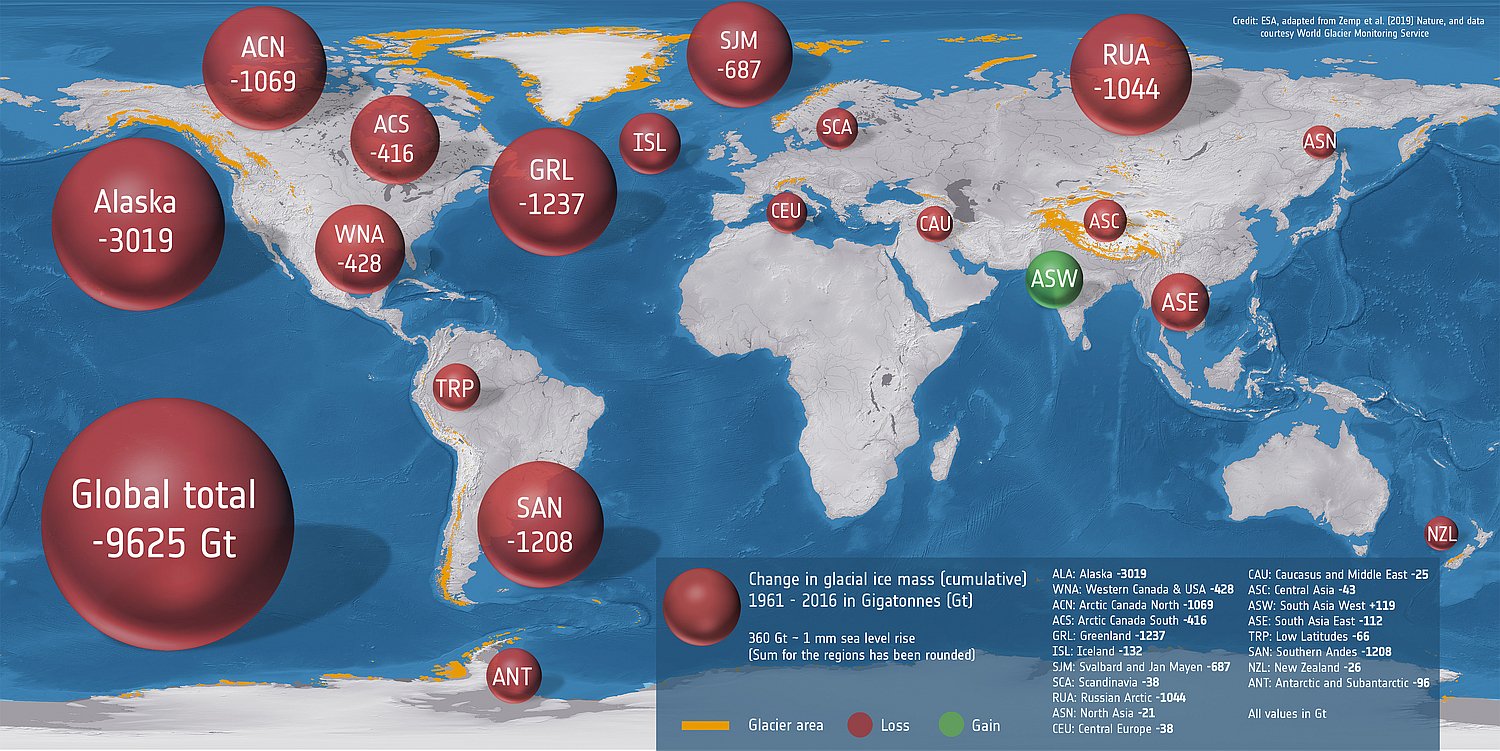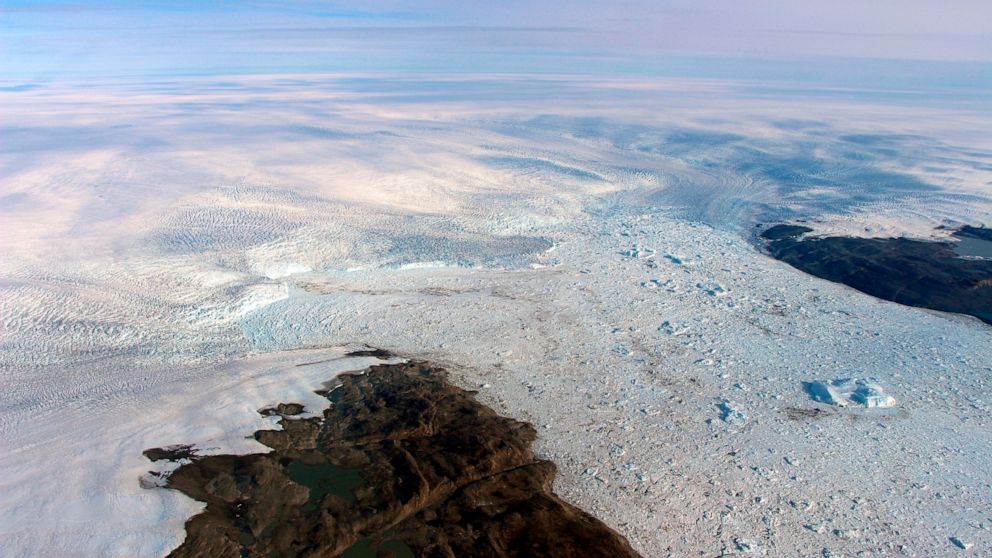
New research shows that the Earth’s glaciers have lost over 9,000 gigatons (9 trillion tons) of ice since 1961, causing the seas to rise by 27 mm (1.06 inches), reports Universe Today.
- You might also like: VIDEO: 120,000 Years of Advance/Retreat of Glaciers in the Alps
The research comes from an international team led by scientists at the University of Zurich, Switzerland. They relied on 50-years of glacier measurements, both from the ground and from satellites, and focused on 19 glacier regions around the world, including Alaska, Greenland, and the Andes.
Frank Paul, from the Department of Geography at the University of Zurich, and co-author of the study had this to say in a press release:
“Glacier outlines are needed to make precise calculations for the areas in question. To date, this information came largely from the US Landsat satellites, the data from which are delivered to European users under ESA’s Third Party mission agreement. In the future, the Copernicus Sentinel-2 mission, in particular, will increasingly contribute to the precise monitoring of glacier change.”
All the data collated was combined with the comprehensive glaciological database compiled by the World Glacier Monitoring Service. It was then used to reconstruct the changes in ice thickness for over 19,000 glaciers around the world, allowing researchers to arrive at the 9 trillion ton number.

Michael Zemp, of the Department of Geography at the University of Zurich, was the research leader in this study:
“While we can now offer clear information about how much ice each region with glaciers has lost, it is also important to note that the rate of loss has increased significantly over the last 30 years. We are currently losing a total of 335 billion tonnes of ice a year, corresponding to a rise in sea levels of almost 1 mm per year. In other words, every single year we are losing about three times the volume of all ice stored in the European Alps, and this accounts for around 30 percent of the current rate of sea-level rise,” added Zemp.
Glaciers, along with ice caps, are the world’s largest source of fresh water. But it’s glaciers that release their water into human communities. Shrinking glaciers means less water for people, less water for irrigation, and less water for hydroelectric power generation. And then, of course, there’s wildlife.
what a load of non sense. 90% of the worlds glaciers are growing.